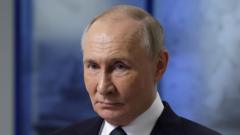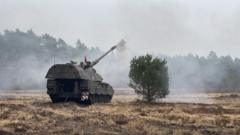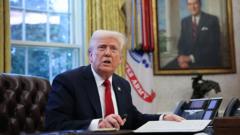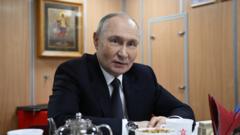An exploration into a New York Times investigation reveals the extensive and covert role the U.S. has played in supporting Ukraine's military efforts against Russia, highlighting critical operations and intelligence-sharing strategies that have significantly influenced the war's dynamics.
New Insights into America's Covert Military Support for Ukraine

New Insights into America's Covert Military Support for Ukraine
A recent investigation sheds light on the deeper military partnership between the United States and Ukraine amidst the ongoing conflict.
The conflict in Ukraine is experiencing a pivotal moment, particularly as relations between President Trump and Russian leader Vladimir Putin appear to be thawing, with calls for an end to hostilities. Yet, unbeknownst to many, the United States has been intricately involved in Ukraine’s military operations prior to Trump’s resurgence in power. An investigation by The New York Times has unveiled this covert military relationship, revealing the extent of American influence intertwined with Ukraine’s defense strategies.
Reflecting on the $66.5 billion worth of weaponry the Pentagon has publicly reported supplying, the New York Times’ probe indicates that U.S. assistance has transcended mere financial support. A clandestine partnership has facilitated detailed military strategies, offering Ukrainian forces intelligence and targeting specifics that have been crucial in battlefield operations.
Five critical takeaways from the investigation illustrate this secret collaboration. Central to these operations is a U.S. Army base located in Wiesbaden, Germany, which has acted as a hub for directing military maneuvers against Russian forces. It is reported that the daily routines of U.S. and Ukrainian military officers involve setting targeting priorities, whereby American and coalition intelligence personnel analyze satellite images and communications to locate Russian units. While military personnel refrained from designating their objectives as “targets” for diplomatic reasons, they were classified as “points of interest,” suggesting a delicate balance between operational efficacy and geopolitical sensitivity.
This deeper understanding of U.S. commitments highlights the ongoing complexities of the Russia-Ukraine conflict and raises significant questions about the nature of military alliances in modern warfare. Insights such as these will likely influence public perception and policy discussions moving forward.





















